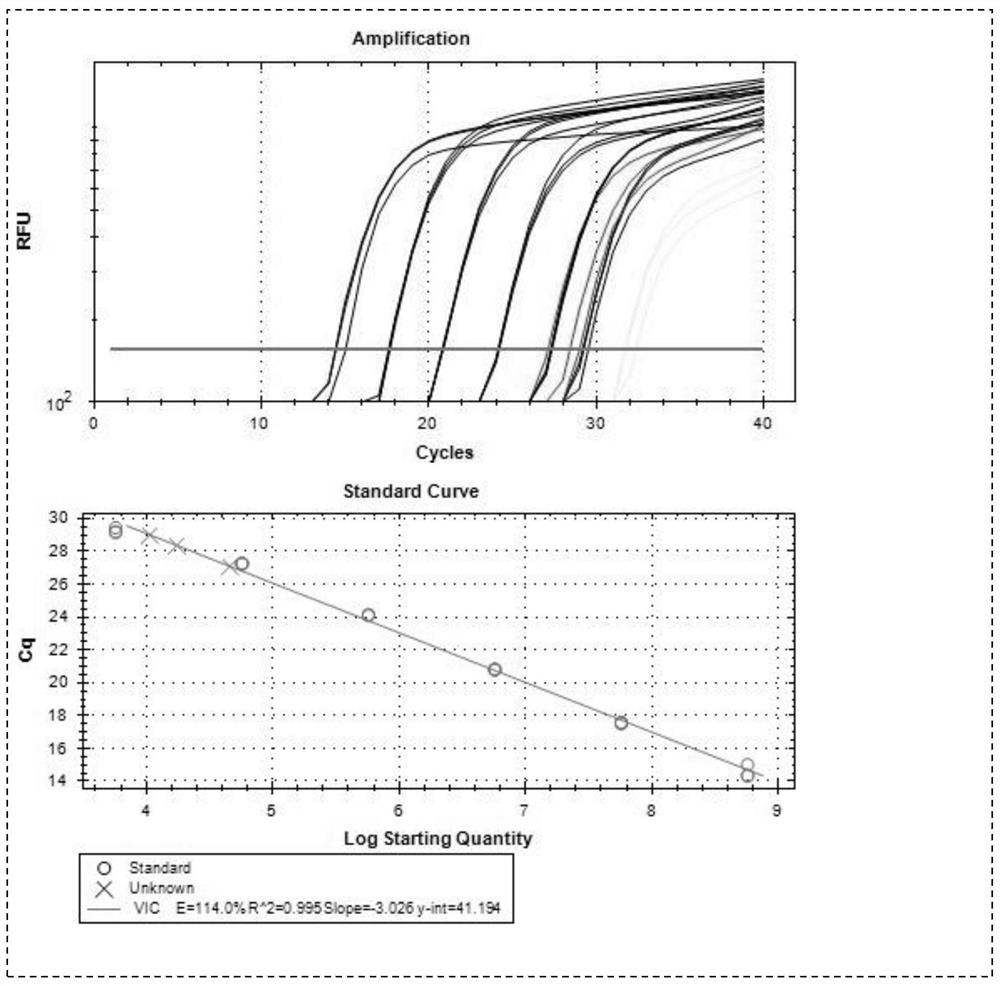A method for sexing ancient human remains with extremely low DNA content
An identification method and gender technology, applied in the field of gender identification of ancient human remains, can solve the problems of low ancient DNA content, serious degradation, misreading, etc., and achieve the effect of improving detection sensitivity, reducing operation steps, and shortening experiment time
- Summary
- Abstract
- Description
- Claims
- Application Information
AI Technical Summary
Problems solved by technology
Method used
Image
Examples
Embodiment 1
[0054]1. Experimental samples: The remains of ancient humans at the Wuzhuang Guoyan site in the Neolithic age were taken as the research object 5000 years ago. The samples were collected in strict compliance with pollution prevention standards, and the collectors used disposable non-polluting masks, hats and gloves And pollution-free appliances. Three samples AH1-2, AH1-3, AH1-13.
[0055]2. Experimental methods and results
[0056]Step 1. Extraction of ancient DNA from Wuzhuang Guoyan site: Weigh 500mg bone meal, add 1ml 10% SDS; 4ml EDTA (PH 8.0) and 100μl 10mg / ml proteinase K, shake overnight at 37℃; DNA after overnight The extracted samples were transferred to the air bath and shaken, and the shaking was continued at 55°C for 6 hours, and then placed at 95°C for 5 minutes to inactivate excess proteinase K. After centrifuging the lysate at 7500r / min for 8min, add 800μl of the supernatant to the ultrafiltration centrifuge tube and centrifuge at 6800r / min to concentrate the lysate to 100...
Embodiment 2
[0077]1. Experimental sample: The Xiangxi Ruins of Fenglin, Lishan, a well with a patio. There are two human bones found in the tomb with a long slope through the tomb. Two of them have the same head and are located within the coffin scar. One of them is buried with straight limbs and the other is buried with curved limbs. , And the head is opposite to the above two, the specific burial style is unclear.
[0078]2. Experimental methods and results
[0079]Step 1. Extraction of ancient DNA from the Xiangxi site of Fenglin, Lishan: Weigh 500mg bone meal, add 1ml of 10% SDS; 4ml of EDTA (PH 8.0) and 100μl of 10mg / ml proteinase K, shake overnight at 37℃; after overnight The extracted DNA samples were transferred to the air bath for shaking, and the shaking was continued at 55°C for 6 hours, and then placed at 95°C for 5 minutes to inactivate excess proteinase K. After centrifuging the lysate at 7500r / min for 8min, take 800μl of the supernatant and add it to the ultrafiltration centrifuge tube...
PUM
 Login to View More
Login to View More Abstract
Description
Claims
Application Information
 Login to View More
Login to View More - R&D
- Intellectual Property
- Life Sciences
- Materials
- Tech Scout
- Unparalleled Data Quality
- Higher Quality Content
- 60% Fewer Hallucinations
Browse by: Latest US Patents, China's latest patents, Technical Efficacy Thesaurus, Application Domain, Technology Topic, Popular Technical Reports.
© 2025 PatSnap. All rights reserved.Legal|Privacy policy|Modern Slavery Act Transparency Statement|Sitemap|About US| Contact US: help@patsnap.com



